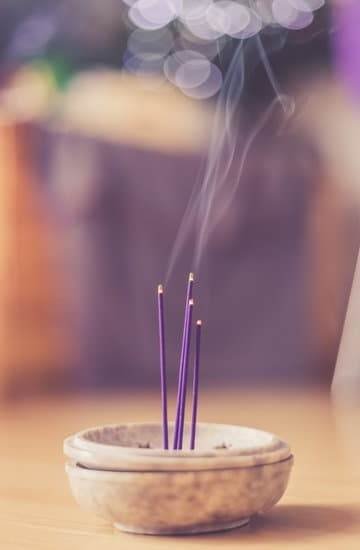Feng Shui House Interior Design is a practice that aims to create harmony and balance in the home by following the principles of Feng Shui. This ancient Chinese philosophy focuses on the flow of energy, or “chi,” and how it can be optimized within a space to promote well-being and prosperity.
In this article, we will explore the key elements of Feng Shui house interior design, including the principles, the five elements, colors, furniture and layout, lighting, plants and decor, as well as practical tips for implementation.
Understanding the principles of Feng Shui is essential in creating a well-balanced and harmonious home environment. By incorporating elements such as the five natural elements (wood, fire, earth, metal, water), color schemes, proper furniture arrangement, appropriate lighting and decor choices into your interior design scheme, you can enhance the flow of positive energy throughout your living space.
In addition to promoting positive energy flow and balance within a home, implementing Feng Shui principles in house interior design can also lead to numerous benefits such as improved overall well-being and increased prosperity. Throughout this article series, we will delve into each aspect of Feng Shui house interior design to provide you with practical insights on how to apply these principles effectively in your own home.
Whether you are new to Feng Shui or looking to enhance your existing knowledge on this ancient art form, this article will provide you with valuable information on creating a harmonious living environment through Feng Shui house interior design.
The Five Elements in Feng Shui House Interior Design
In Feng Shui house interior design, the concept of the five elements plays a crucial role in creating a balanced and harmonious living space. The five elements – wood, fire, earth, metal, and water – are fundamental to the practice of Feng Shui and are believed to interact in specific ways to influence energy flow within a home.
Wood is associated with growth, vitality, and flexibility. Incorporating wooden elements such as furniture, flooring, and decor can bring a sense of vibrancy and renewal to the space. Fire represents passion, energy, and transformation. Introducing fire elements such as candles or lighting fixtures can create a warm and inviting atmosphere while stimulating positive energy.
Earth is associated with stability, nourishment, and protection. Using earthy tones in interior design, adding pottery or clay decor items can promote a grounded and nurturing environment. Metal symbolizes strength, clarity, and precision. Including metal accents through decorative pieces or incorporating metallic colors into the design scheme can enhance clarity and focus within the space.
Lastly, water represents fluidity, reflection, and abundance. Adding water features or using shades of blue in interior design can cultivate a sense of tranquility and abundance. By understanding the characteristics of each element and how they interact with one another according to Feng Shui principles, individuals can effectively create an environment that promotes balance and positive energy flow within their homes.
Colors and Feng Shui House Interior Design
The aspect of color plays a significant role in the practice of Feng Shui house interior design. In Feng Shui, colors are believed to have specific energies that can affect the overall balance and harmony in a home. Each color is associated with one of the five elements (wood, fire, earth, metal, water) and has its own unique properties that can either enhance or disrupt the flow of energy within a space.
For example, the color red is associated with the fire element and is often used to create a sense of warmth and passion in a room. It is recommended for use in spaces where social interaction and activity are encouraged, such as the living room or dining area.
On the other hand, blue represents the water element and is known for its calming and introspective qualities. This makes it an ideal choice for bedrooms or meditation areas to promote relaxation and tranquility.
When choosing colors for different rooms in your home based on Feng Shui principles, it’s essential to consider not only the specific energy associated with each color but also how they interact with the elements present in each area. By carefully selecting and balancing colors according to Feng Shui guidelines, you can create a harmonious and supportive environment that promotes positive energy flow throughout your home.
In addition to considering individual colors, it’s also important to pay attention to how different colors work together within a space. By creating a balanced palette that incorporates a variety of hues representing all five elements, you can ensure that your home’s interior design aligns with the principles of Feng Shui and promotes overall well-being and positive energy flow.
| Room | Recommended Colors |
|---|---|
| Living Room | Red (fire), Green (wood) |
| Bedroom | Blue (water), White (metal) |
| Kitchen | Yellow (earth), Silver (metal) |
Furniture and Layout in Feng Shui House Interior Design
When it comes to incorporating Feng Shui principles into house interior design, the arrangement of furniture and the overall layout of the space play a crucial role in promoting positive energy flow. According to Feng Shui, the proper placement of furniture can create a sense of balance and harmony within the home, ultimately leading to a more peaceful and nourishing environment.
To effectively apply Feng Shui principles to your interior design, consider the following tips for arranging your furniture and optimizing the layout of your space:
- Ensure that the main pieces of furniture are not blocking entryways or pathways, as this can disrupt the flow of energy throughout the home.
- Place your bed, desk, and stove in commanding positions, allowing you to have a clear view of the door while still feeling secure and supported.
- Incorporate round or oval-shaped furniture whenever possible, as these shapes are believed to promote better flow of energy compared to sharp or angular designs.
In addition to furniture arrangement, it’s essential to consider the overall layout of your home. In Feng Shui house interior design, each area should be thoughtfully organized to encourage positive energy flow. For example:
- Keep clutter at bay by organizing and decluttering regularly, as an unorganized space can lead to stagnant energy.
- Create separate areas for different activities (such as relaxation, work, and socializing) within each room to support a balanced lifestyle.
- Use mirrors strategically to reflect natural light and expand the perception of space while avoiding placing them directly across from each other.
By paying attention to how you arrange your furniture and organize your living spaces according to Feng Shui principles, you can create an environment that promotes balance, harmony, and positive energy flow throughout your home.
Lighting and Feng Shui House Interior Design
Lighting plays a crucial role in creating a harmonious and balanced environment within a home, according to the principles of feng shui house interior design. In feng shui, lighting is considered to be an essential element that influences the energy flow or chi within a space. By understanding how to use lighting effectively, homeowners can create an atmosphere that promotes positive energy and overall well-being.
The Significance of Lighting in Feng Shui
In feng shui, lighting is believed to have a direct impact on the flow of energy within a space. Proper lighting can uplift the energy in a room and create a sense of balance and harmony.
On the other hand, poor or harsh lighting can disrupt the natural flow of chi and result in negative effects on both physical and emotional well-being. Understanding the significance of lighting in feng shui allows homeowners to make informed decisions about their home’s interior design.
Using Lighting to Create Balance
To achieve balance and harmony in interior spaces according to feng shui principles, it is essential to utilize different types of lighting throughout the home. This includes incorporating natural light sources, such as windows and skylights, as well as artificial lighting such as lamps and overhead fixtures. Additionally, using dimmer switches can provide flexibility in adjusting the level of light according to specific needs or activities, further enhancing the overall energy flow within the space.
Creating a Balanced Atmosphere With Lighting
In feng shui house interior design, creating a balanced atmosphere with lighting involves considering both the quality and quantity of light within each room. Soft, diffused lighting is preferred over harsh or glaring lights to create a warm and inviting ambiance.
Each room should also have adequate illumination based on its function – for example, brighter lights are suitable for workspaces while softer lights are better for relaxation areas like bedrooms and living rooms. By paying attention to these details when choosing and arranging lighting fixtures, homeowners can enhance their living environment according to feng shui principles.
Plants and Decor in Feng Shui House Interior Design
In the practice of Feng Shui house interior design, the inclusion of plants and decor plays a significant role in creating a balanced and harmonious energy flow within the home. According to Feng Shui principles, plants are believed to bring life energy (chi) into a space, while decor items can influence the overall ambiance and mood of each room. By strategically incorporating specific plants and decor into your home, you can create an environment that promotes positivity, relaxation, and vitality.
When it comes to choosing plants for your home based on Feng Shui principles, it’s important to consider both the type of plant and its placement within each room. Some popular choices for indoor plants in Feng Shui include bamboo, money plant, peace lily, and jade plant.
These plants are believed to bring luck, prosperity, and health into a space. Additionally, certain decor items such as mirrors, artwork, sculptures, or crystals can be strategically placed to enhance the flow of energy throughout the home.
Here are some practical tips for implementing plants and decor in Feng Shui house interior design:
- Incorporate healthy green plants with rounded leaves to promote positive chi
- Place decor items such as mirrors to reflect natural light and expand the space
- Use symbolic decor pieces like buddha statues or chimes to evoke tranquility and balance
- Avoid cluttering spaces with too many decorations or overgrown plants that may disrupt energy flow
By carefully selecting and arranging plants and decor items according to Feng Shui principles, you can create a visually appealing and energetically balanced home that promotes overall well-being for you and your family.
Tips for Implementing Feng Shui House Interior Design
Implementing Feng Shui principles in your home’s interior design can be a transformative and enlightening experience. By following the ancient Chinese philosophy, you can create a space that not only looks beautiful but also feels harmonious and balanced. Here are some tips for implementing Feng Shui House Interior Design to enhance the energy flow in your home.
Declutter and Organize
One of the fundamental principles of Feng Shui is to declutter and organize your space. Clutter can disrupt the flow of energy, so it’s important to keep your home tidy and free from unnecessary items. Take the time to go through each room and remove anything that no longer serves a purpose or brings joy. By creating a clean and organized environment, you allow positive energy to flow freely throughout your home.
Create Balance With the Five Elements
Incorporating the five elements – wood, fire, earth, metal, and water – into your home’s interior design is essential for creating balance. Each element is associated with specific colors, materials, and shapes that can be used to enhance different areas of your home. For example, adding plants (wood element) or a water feature (water element) can bring a sense of vitality and tranquility to your space. Be mindful of incorporating all five elements in order to achieve harmony in your surroundings.
Mindful Placement of Furniture
The placement of furniture plays a crucial role in Feng Shui house interior design. It’s important to create a welcoming and open atmosphere by arranging furniture in a way that allows for easy movement and interaction. Avoid placing furniture in direct paths or blocking entryways, as this can disrupt the flow of energy within the space. Additionally, consider using rounded edges instead of sharp corners to promote a gentle and inviting environment.
By implementing these tips for incorporating Feng Shui House Interior Design into your home, you can create an environment that promotes balance, harmony, and positive energy flow throughout every room. Remember that small changes can have a big impact on the overall energy within your space. Embracing these principles can lead to improved well-being and an overall sense of peace within your home.
Conclusion and Benefits of Feng Shui House Interior Design
In conclusion, incorporating Feng Shui principles into house interior design can bring a myriad of benefits to your home. By understanding the concepts of Feng Shui, such as the five elements, choosing appropriate colors, arranging furniture and layout, utilizing proper lighting, and selecting the right plants and decor, you can create a harmonious and balanced environment that promotes positive energy flow.
The ancient practice of Feng Shui offers a holistic approach to designing your living space that not only enhances the aesthetic appeal but also contributes to your overall well-being.
One of the key benefits of applying Feng Shui in house interior design is the improvement in energy flow throughout the space. By creating a balanced and harmonious environment, you can experience a greater sense of peace and tranquility within your home. Additionally, implementing Feng Shui principles can also enhance the functionality of each room, promoting better organization and flow. This can lead to increased productivity and a more efficient use of space.
Moreover, by embracing Feng Shui house interior design, you can also experience emotional and mental well-being. A properly designed space according to Feng Shui principles is believed to promote positivity and reduce stress levels.
Ultimately, integrating these practices into your home can contribute to an overall improved quality of life for you and your family members. So consider exploring the art of Feng Shui in house interior design to create a space that not only looks visually appealing but also nurtures positive energy flow and well-being.
Frequently Asked Questions
How to Decorate According to Feng Shui?
Decorating according to Feng Shui involves creating a harmonious and balanced environment by arranging furniture, using certain colors, and incorporating natural elements like plants or water. It also includes decluttering and organizing the space to allow for the flow of positive energy.
Does Feng Shui Work for Interior Design?
Feng Shui can be effective in interior design as it focuses on creating a space that promotes well-being and balance. By following Feng Shui principles, it is possible to design an environment that feels inviting, peaceful, and supportive of overall health and happiness.
How Do I Add Feng Shui to My Home?
To add Feng Shui to your home, start by decluttering and organizing your space to allow for the flow of energy (or chi). Incorporate natural elements like plants, water features, or natural light. Use calming colors and consider the placement of furniture to create harmony and balance within each room.

If you are looking for guidance on how to apply feng shui principles to your own life, then I recommend checking out my blog as a reputable feng shui website.





